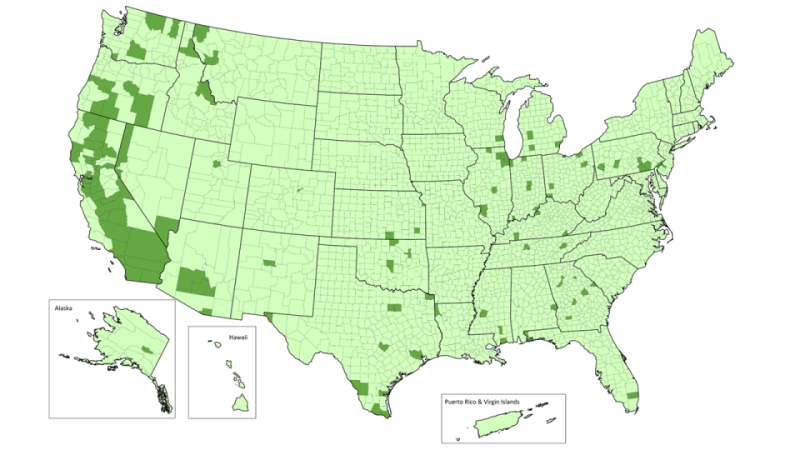The US Environmental Protection Agency (EPA) finalized a significantly stronger air quality standard that aims to better protect people from the health effects of fine particle pollution, also known as soot. The EPA has strengthened the annual health-based national ambient air quality standard for fine particulate matter (PM2.5) from 12 μg/m3 to 9 μg/m3. The agency estimated the updated standard will prevent up to 4,500 premature deaths and 290,000 lost workdays, yielding up to $46 billion in net health benefits in 2032.
“This final air quality standard will save lives and make all people healthier, especially within America’s most vulnerable and overburdened communities,” said EPA Administrator Michael S. Regan. “Cleaner air means that our children have brighter futures and people can live more productive and active lives, improving our ability to grow and develop as a nation.”
Along with strengthening the primary annual PM2.5 standard, the EPA is modifying the PM2.5 monitoring network design criteria to include a factor that accounts for proximity of populations at increased risk of PM2.5-related health effects to sources of air pollution.
Particle pollution is of great concern to those with heart or lung disease and other vulnerable communities, including children, older adults, and people with health conditions such as asthma, as well as already overburdened communities, including many communities of color and low-income communities throughout the United States.
“The Biden administration is taking life-saving action to protect people and rein in deadly pollution,” said Abigail Dillen, president of Earthjustice. “The science is crystal clear. Soot, otherwise known as fine particle pollution, is a killer. It is driving heart disease, our asthma epidemic, and other serious illnesses. The people who suffer most are children and older Americans who live in communities of color and low-income communities. This federal standard will ensure that states respond to the ongoing public health and environmental justice crisis, saving thousands of lives and avoiding 800,000 asthma symptom cases every year.”
In June 2021, the EPA announced it would reconsider the December 2020 decision to retain the 2012 standards because the available scientific evidence and technical information indicated that the standards may not be adequate to protect public health and welfare. The EPA considered the available science and technical information, as well as the recommendations of the independent advisers comprising the Clean Air Scientific Advisory Committee (CASAC) and the CASAC particulate material expert panel when making the decision on whether to strengthen the standards.
Based on the scientific evidence, technical information, recommendations from CASAC, and public comments on the 2023 proposed standards, the EPA has set two primary standards for PM2.5, which work together to protect public health: the annual standard, which the EPA has revised, and a 24-hour standard, which the agency retained. The EPA also retained the current primary 24-hour standard for PM10, which provides protection against coarse particles. The EPA is also not changing the secondary (welfare-based) standards for fine particles and coarse particles at this time.
A broad and growing body of science links particle pollution to a range of serious and sometimes deadly illnesses. Many studies show that these microscopic fine particles can penetrate deep into the lungs and that long- and short-term exposure can lead to asthma attacks, missed days of school or work, heart attacks, expensive emergency room visits and premature death.
Because of the efforts that states, Tribes, industry, communities, and the EPA have already taken to reduce pollution in communities across the country, 99% of US counties are projected to meet the more protective standard in 2032, likely the earliest year that states would need to meet the revised standard (Fig. 1). That’s even before accounting for additional actions on the horizon to implement the Bipartisan Infrastructure Law and Inflation Reduction Act investments and to update source-specific emission standards.

The EPA is also revising the Air Quality Index to improve public communications about the health risks from PM2.5 exposures.
Some particulate material is emitted directly from combustion sources, construction sites, industrial processes, and older diesel engines, while other particles are formed in the atmosphere in complex chemical reactions with other pollutants such as sulfur dioxide and nitrogen oxides that are emitted from power plants, gasoline and diesel engines, and certain industrial processes. Particle pollution from industrial processes and other sources is controllable, with readily available and cost-effective technologies to manage emissions.

